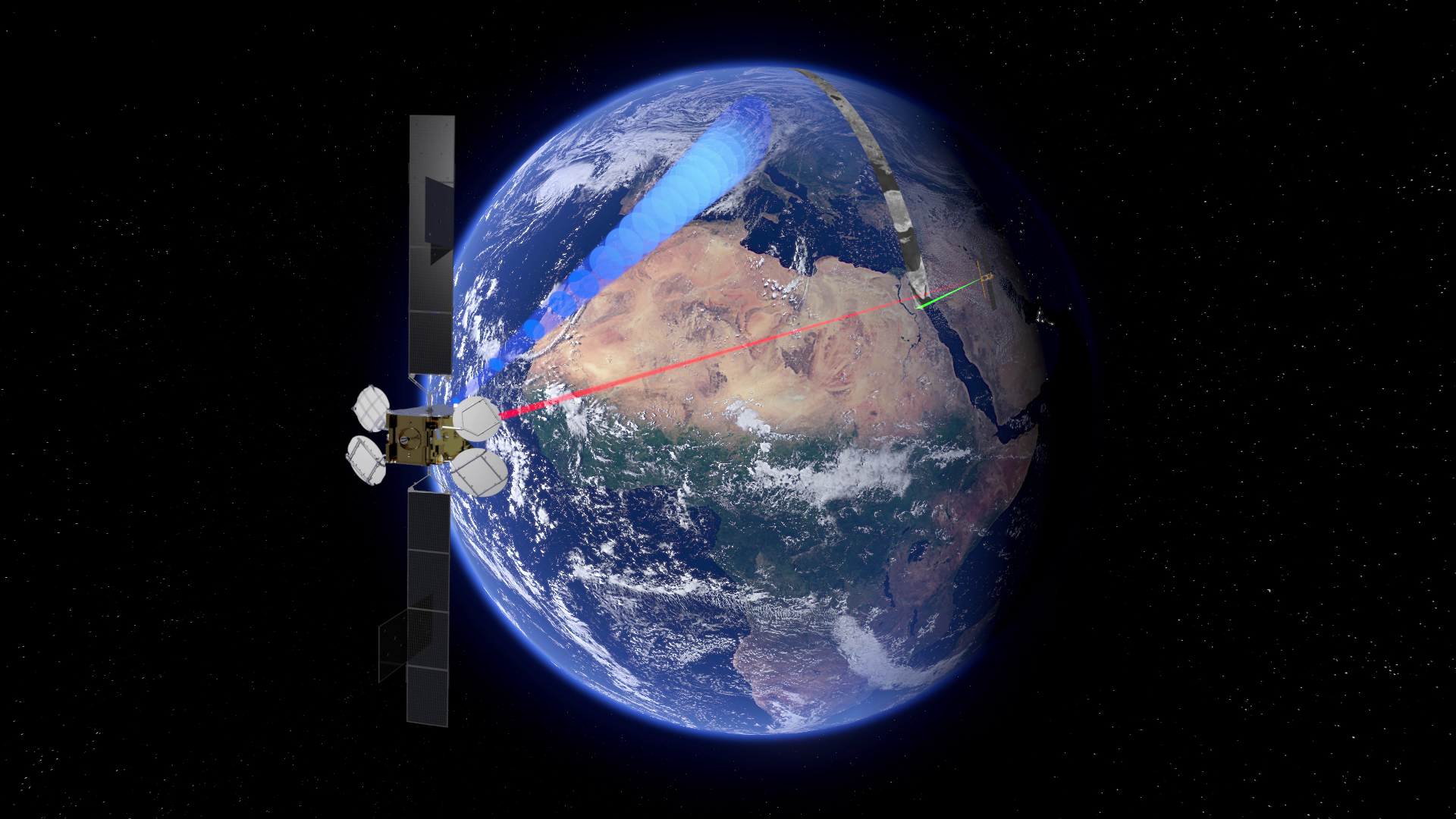Applications
The first satellites to make use of the EDRS services are the European Commission’s Copernicus Sentinels.
Copernicus is an ESA/EC Earth observation programme that over the course of the next few years will launch pairs of ‘Sentinel’ satellites, each with their own unique abilities.


Access the video
Sentinel-1 and -2 will be the anchor customers of the SpaceDataHighway, and will use it to relay their data to Earth at much higher rates than would otherwise be possible.
When they are all deployed, the Sentinels will need to transmit up to 6 Tb to the ground every day. This equates to several billions of pages of text every 24 hours, and is an unprecedented amount of information that today’s users need and expect to receive in quasi-real time.
Time is of the essence
No one benefits more from near-instant access to satellite data than emergency response efforts. Satellites can help survey areas struck by natural disasters. When the situation on the ground is changing rapidly, satellite data from several hours ago is of no use to rescue teams.
EDRS will support disaster mitigation by supplying the data not only as quickly as possible, but to the right people as well, thanks to its network of ground stations.
EDRS for maritime

Nowadays, satellite imagery and information are used everywhere. Many of our goods are transported globally by ships: the tonnes of maritime cargo being shipped from one part of the world to the other every year has multiplied from millions to billions since the 1950s and with increased traffic comes more need to survey and monitor.
EDRS allows maritime customers to track their ships in near-real time. The optical link in geostationary orbit avoids the traditional delays incurred as the lower satellite moves out of range of its ground station. This normally leaves the user out of the loop for 90 minutes in a typical 100 minute orbit, which is too big a gap when a ship is attempting to navigate its way through ice floes, for example.
The International Space Station

The International Space Station is also set to use EDRS to communicate with the ground. The two-way Ka-band intersatellite link can not only be used as a more reliable way to send information to Earth, but also for commands to be sent up. The SpaceDataHighway will be used to support the Station’s usual functions, such as live video transmissions or sending the results of experiments to the ground from Europe’s Columbus research module.






